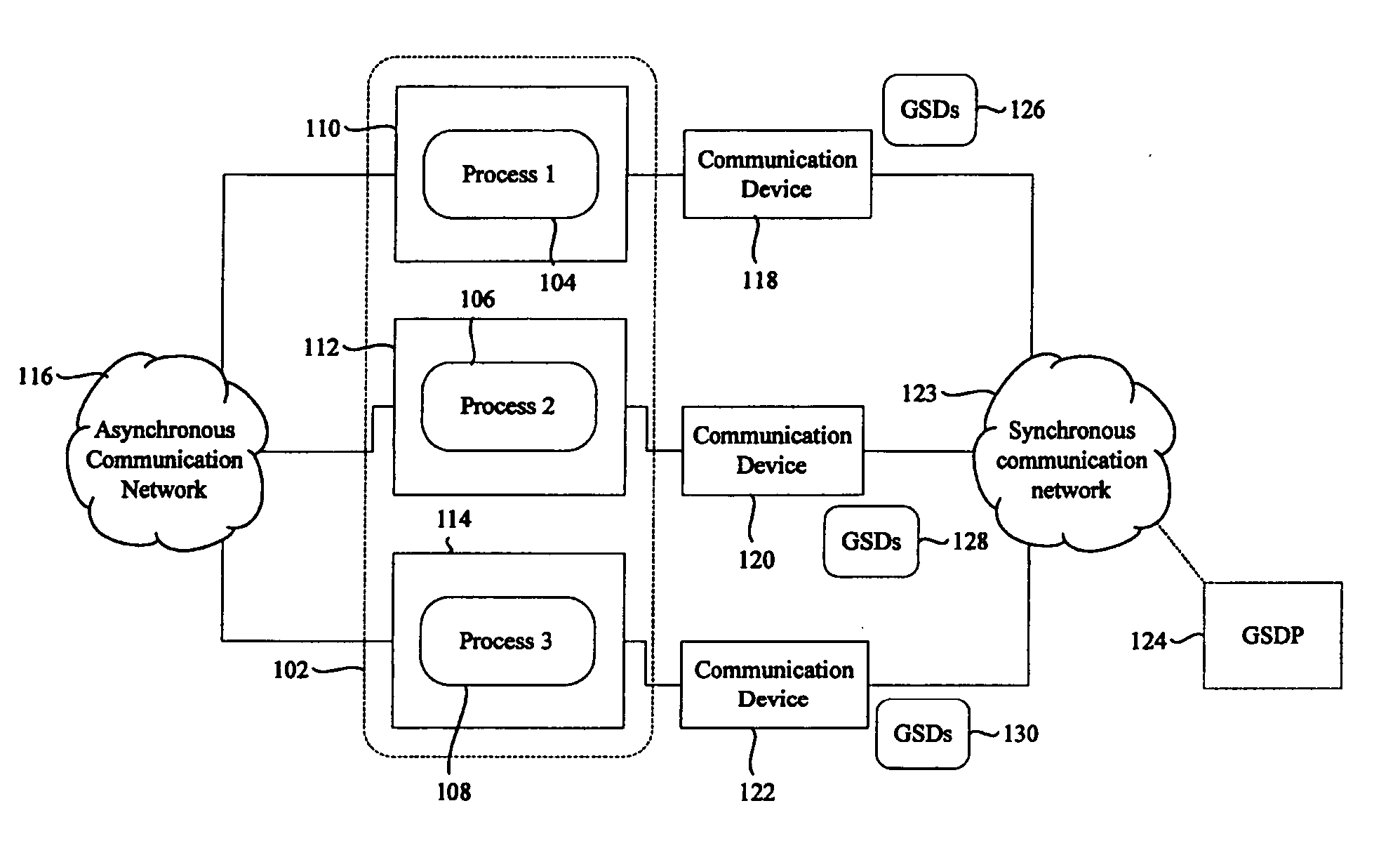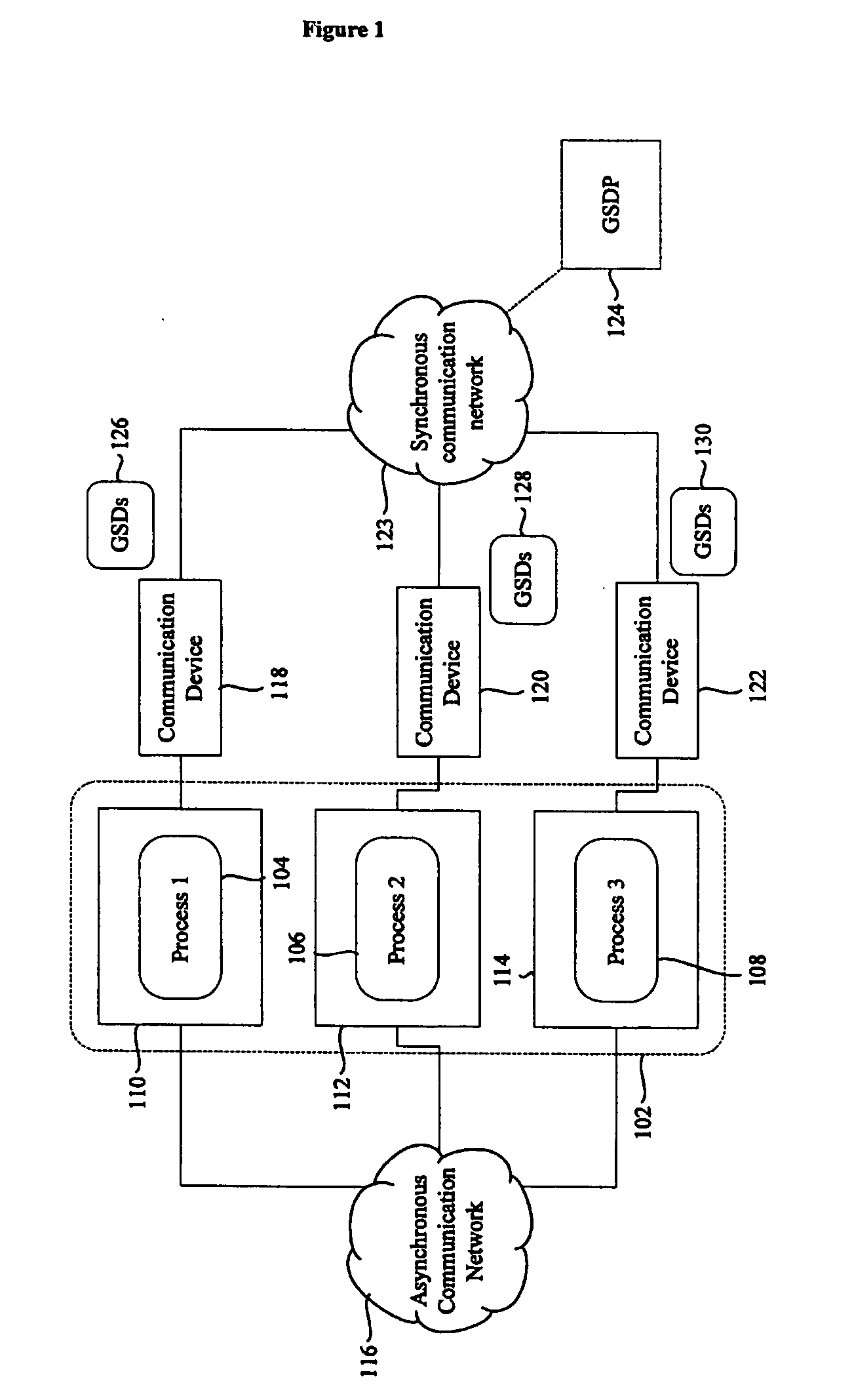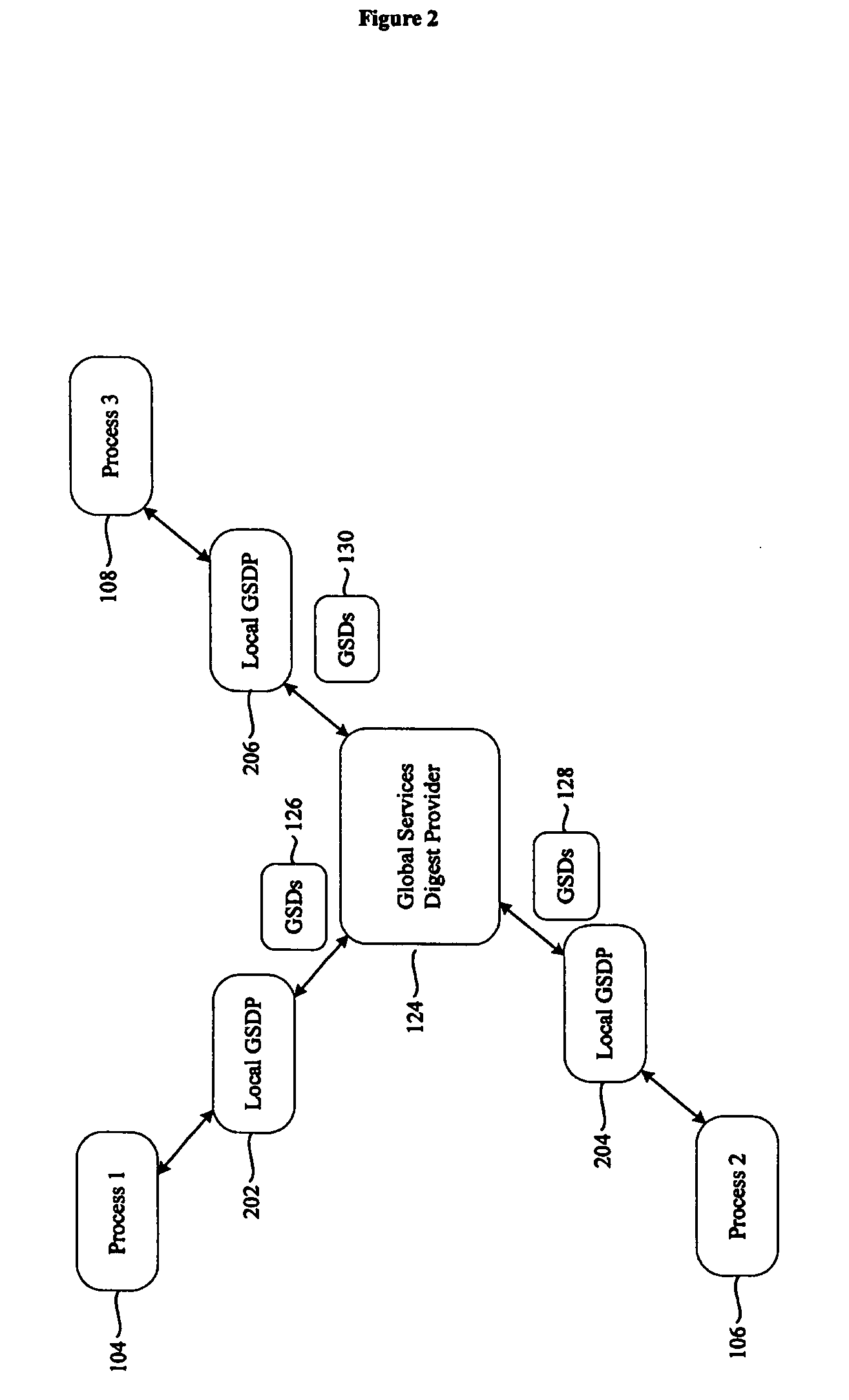Data processing system and method
a data processing system and data processing technology, applied in the field of distributed data processing system and method, can solve the problems of failure of both processing and communication between the processes executing the distributed algorithm, the failure of the underlying distributed system to ensure synchrony, and the approach to designing and implementing fault-tolerant distributed algorithms based on synchronous models affords very limited portability of those algorithms which also do not scale well, so as to reduce message traffic, simplify the distributed algorithm, and run relatively quickly
- Summary
- Abstract
- Description
- Claims
- Application Information
AI Technical Summary
Benefits of technology
Problems solved by technology
Method used
Image
Examples
Embodiment Construction
[0029] Before proceeding with a detailed description of the preferred embodiments of the present invention, a number of definitions are presented.
[0030]“Asynchronous system” is defined as a system in which or for which there are no bounds relating to communication or processing delays.
[0031]“Synchronous system” is defined as a system in which there are bounds for both communication and processing delays,
[0032]“FD” is a failure detector.
[0033] A “Wormhole” is a synchronous subsystem via which limited amounts of data can be sent with bounded end-to-end delivery delays.
[0034]“System Model” refers to a System model such as the one described in “Impossibility of Distributed Consensus with One Faulty Process”, M. J. Fischer, N. A. Lynch and M. D. Paterson, Journal of the ACM, 32(2), pages 374-382, April 1985. It comprises a finite set Π of n processes, n>1, namely, Π={p1, . . . , pn}. A process can fail by crashing, i.e., by prematurely halting, and a crashed process does not recover...
PUM
 Login to View More
Login to View More Abstract
Description
Claims
Application Information
 Login to View More
Login to View More - R&D
- Intellectual Property
- Life Sciences
- Materials
- Tech Scout
- Unparalleled Data Quality
- Higher Quality Content
- 60% Fewer Hallucinations
Browse by: Latest US Patents, China's latest patents, Technical Efficacy Thesaurus, Application Domain, Technology Topic, Popular Technical Reports.
© 2025 PatSnap. All rights reserved.Legal|Privacy policy|Modern Slavery Act Transparency Statement|Sitemap|About US| Contact US: help@patsnap.com



